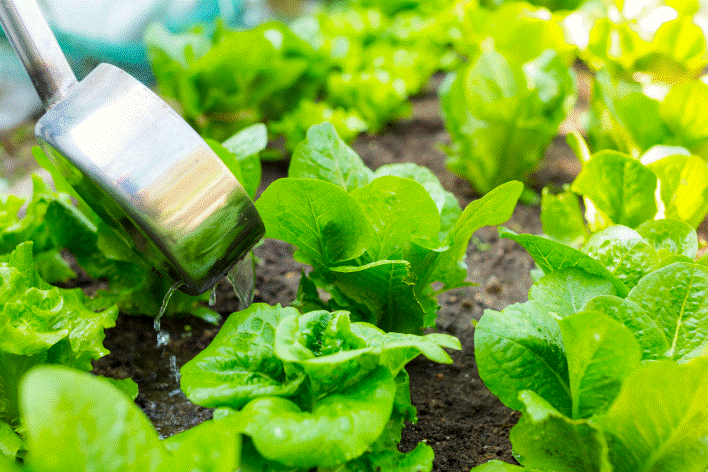Feeding Plants The Natural Way

Did you know there’s a whole garden center right by your back door? No, this isn’t a
shopping-deprived gardener’s fantasy brought on by too long in lockdown.
All over your house and garden, you’ll find everyday items you can upcycle into gardening staples, from cardboard box plant pots to hazel rod beanpoles.
Easiest of all, though, are homemade fertilizers and pesticides, made from just about
anything as long as it’s organic. It’s a planet-friendly way to garden, big on recycling, plastic-free, and with none of the high carbon footprint involved in making and transporting chemicals.
Over the following two issues, we’re sharing our favorite easy, homemade recipes for products that keep plants healthy, banish pests and boost harvests – all using materials you already have to hand.
This month it’s all about keeping your plants well fed and performing at their best. If you make your compost, you’re already familiar with homemade plant food.
But target the natural nutrient content of leaves and organic matter more precisely, and you can inject specialist elements exactly where they’re needed.
You can feed slow release – for example, using potassium-rich comfrey leaves as a mulch to break down gradually – or provide an instant boost by extracting the goodness into liquid form.
And it’s free!
RECIPES FOR FEEDING PLANTS
Comfrey Feed
Plant a comfrey patch, and you need never buy another bottle of tomato feed.
This perennial grows anywhere and provides an endless supply of lush green leaves for making a liquid feed full of potassium; the magic ingredient plants use to produce flowers and fruit.
Common comfrey spreads like mad, so use the variety ‘Bocking 14’, which doesn’t set
viable seed, so it stays put.
Harvest leaves while young, at 20-30cm long, wearing gloves as the bristly surfaces may irritate the skin.
They regrow quickly, and you can expect to make four or five batches of feed a year. Use fresh, as it can ferment if stored too long, and dilute about 1:20 with water until it’s the color of weak tea.
Best for Tomatoes, annuals, bedding plants
Nettle feed
When you’re after a high nitrogen feed to encourage lush, leafy growth, put on your
gloves and reach for your nearest nettle patch.
Young nettles cut at about 30cm tall in early summer, before they turn woody, contain the
most nitrogen.
Please don’t take them from the open countryside, though, as they’re an essential food source for wildlife, and ask permission before harvesting from someone else’s land.
Make up a big batch of nettle feed in June, and it’ll keep all season.
Dilute roughly one-part nettle feed to 20 parts water. Once you’ve used it up, tip the residual sludge onto the compost.
Best for Salads, brassicas, leafy houseplants
Compost Tea
Home-made compost teems with life. Among the billions of beneficial microbes living in your heap are mycorrhizal fungi, nitrogen absorbing bacteria, and nematodes, which attack slugs.
Add water, and they multiply rapidly.
This is the theory behind making compost tea for your garden plants, which boosts growth, health, and harvests.
As yet, these claims are not scientifically proven, but at the very least, you’ll transfer an all-around boost of rich nutrients in easily accessible liquid form.
Brewing your tea can be as complicated as you like. Some bubble air through the liquid to
encourage more micro-organisms, and add molasses and seaweed meal.
But the simplest method is to steep it for a couple of days, then dilute it to the color of weak tea and water your plants with it.
Always use it up within 48 hours – if it starts to smell, it’s too old.
Best for Giving all plants a boost
Veg Peelings
In autumn, dig trenches and line with newspaper. Then gradually build up layers of veg peelings with a layer of soil on top (to avoid attracting vermin) until you reach the top.
Finish with 1 Dem of compost and plant into it next spring to fuel supercharged growth.
Best for Runner beans, pumpkins, and sunflowers
Coffee Grounds
Your morning brew is full of nitrogen, potassium, and essential minerals, so save the grounds to scatter thinly around your plants or add to the compost bin.
Its low pH especially suits acid-loving fruit. Don’t overdo it, though, as caffeine inhibits growth if used to excess.
Best for Blueberries, Raspberries, and rhododendrons
Wood Ash
Ash from wood fires, bonfires, and barbecues are high in potassium and safe, as long as you haven’t used coal or starter fuel.
Fork in lightly around plants. It’s alkaline, deters clubroot in brassicas, but doesn’t use it on acid-loving raspberries or potatoes.
Best for Brassicas, peonies, and clematis
Eggshells
Put your breakfast eggs to good use by keeping the shells – the calcium they contain is essential for forming strong cell walls.
Rinse, then dry on a sunny windowsill. Blitz them in a blender, so they’re more easily absorbed, then scatter around trees and plants.
Best for Brassicas, apples, and cherry trees
Pee
Sorry … but we couldn’t leave out the single best fertilizer you can make yourself. Urine is a fantastic fast-acting liquid feed that’s rich in nitrogen. Use fresh (it shouldn’t smell), and only if you aren’t on medication.
Dilute 1:20 with water (1:so for containers) and water the soil, not the plants.
Best for Ornamentals like lawns
Banana skins
Chop them up and add them into the base of planting holes and mix them into compost heaps, where they’ll release potassium and other useful nutrients.


























Comments are closed.